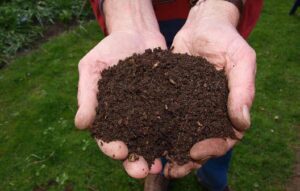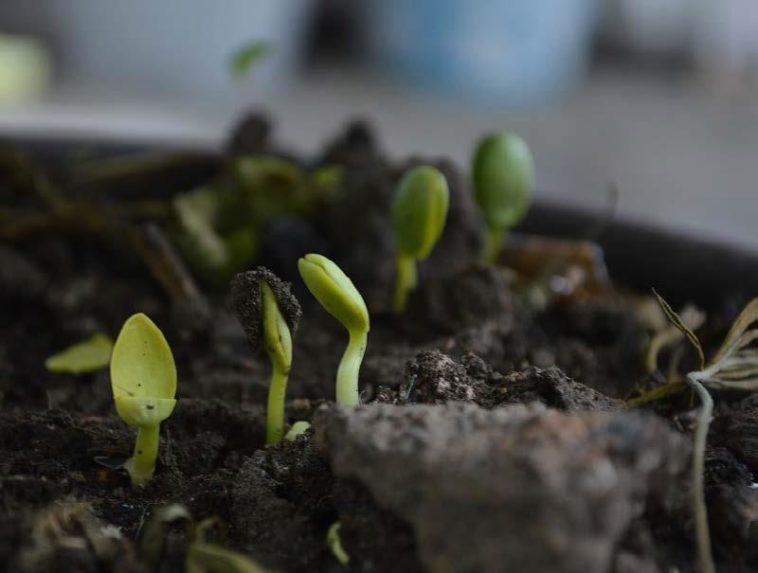Your vegetable garden at home can be transformed into a growing, sustainable food source without having to buy expensive chemical fertilisers. Making your own compost is cheap and will rejuvenate your garden soil, ensuring you the best quality vegetables that you can produce.
This series will explain the making and benefits of organic compost in your backyard. This first part will explore how to make good compost in your garden.
Compost forms continually in nature as plants decompose and animals die. Decomposition is the process in which organic material (plant and animal remains) is broken down into simpler components by bacteria and micro-organisms. As a result of decomposition into compost, an earthy, dark, crumbly substance is formed. This substance is called humus and contains nutrients necessary for plant growth.
Compost or humus acts like a sponge, thus helping the soil to retain moisture and plant nutrients. The crumbly structure helps breaking down heavy clay soils and binding sandy soils to a loamier soil. Quick run-off of water and erosion is reduced by humus, and soil drainage is improved drastically. Because of the nutritious nature of compost, the need for chemical fertilisers is greatly reduced if not eliminated.
This leaves an excellent opportunity for any gardener or small-scale farmer to produce his own compost for his crops or gardens by using easy accessible materials like grass clippings, animal manure, leaves or any available substance that is suitable for composting.

Recycle your organic household refuse to create compost that can improve your soil quality and fertility.
How to make compost
Composting is a matter of providing the ideal environmental conditions for micro-biological life. This can be obtained by providing the following factors:
Air
Microbes responsible for composting are called aerobic micro-organisms − the composting heap must therefore be sufficiently aerated. If not, slow decomposition will occur. Anaerobic microbes will take over if the compost heap is not well aerated and this will lead to bad odours given off by the heap. Green grass clippings and wet leaves are examples of composting materials that mats down easily and should be thoroughly mixed with materials like sawdust and straw for better functioning of the compost heap. The heap should also be turned with a spade or garden fork to give it a more “fluffed-up” condition for better aeration.

The structure of compost helps to keep soil loose and allow for better water drainage.
Water
The compost heap must be moist, but not waterlogged, almost like a wrungout sponge. If the heap is too wet, it will inhibit decomposition and will release bad odours. At the ideal moisture content there is a thin film of water around each particle in the heap, that improves the distribution and activity of microbes. If the pile is too dry, it will slow down composting significantly. In dry conditions it may be necessary to wet the compost heap from time to time, and in wet conditions, to provide cover over the heap to prevent too much water from penetrating.To test moisture content, take a handful of compost and squeeze it in your fist. A few drops of water should be released. If the heap gets too wet, it can be corrected by turning the heap to allow moisture to evaporate. You can also add some dry materials like straw or sawdust to absorb the excess moisture.
Heat
Heat in the compost heap is a sign that the micro-organisms are at work. If the moisture content and oxygen in the heap are sufficient, the temperature may well exceed 55°C. 55°C is a desirable temperature because all weed seeds and fly larvae are killed and more microbes are present, therefore the warmer the heap, the quicker the decomposition. It is helpful to insulate the heap to contain the heat inside.
Food
The nitrogen/carbon ratio in a compost heap is of the utmost importance. Nitrogen can be obtained from “greens”, such as materials like fresh grass clippings, fruit and vegetable scraps, green leaves, coffee grounds, tea leaves and fresh manure. Carbon can be obtained from “browns” such as straw, sawdust, autumn leaves, cornstalks, et cetera.
“Browns” are made up of long chains of sugar joined together and serves as energy for the microbes. “Greens” or nitrogen on the other hand is a critical element in amino acids and proteins and can be seen as a protein source for microbes to multiply.
We thank the Agricultural Research Council (ARC) of South Africa for the material they provided for the readers of ProagriMedia. For more information visit their website www.arc.agric.za.









